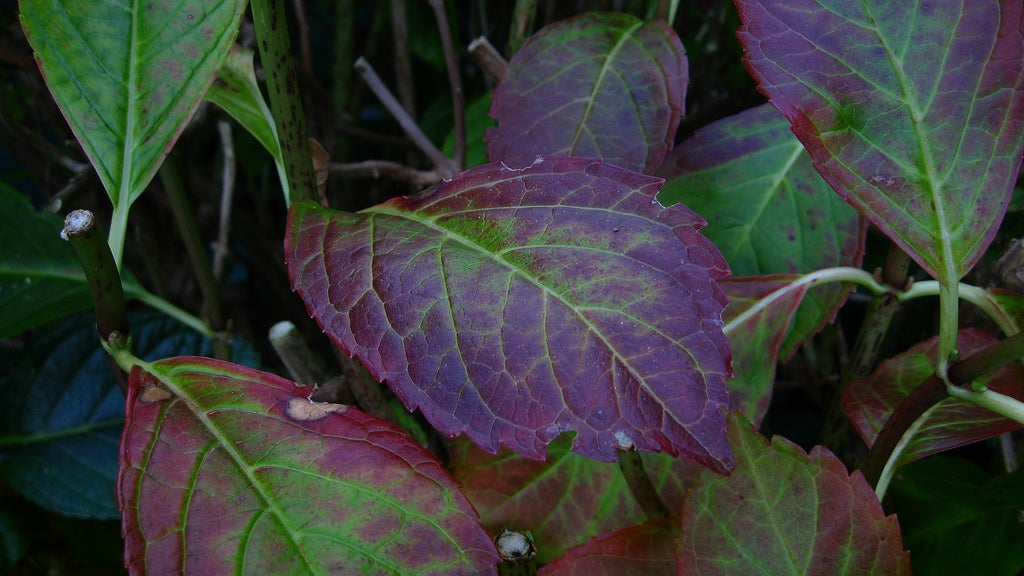The 10-Second Trick For Hydrangea Leaves Turning Yellow
The 10-Second Trick For Hydrangea Leaves Turning Yellow
Blog Article
Some Known Facts About Hydrangea Leaves Turning Yellow.
Table of ContentsSome Known Details About Hydrangea Leaves Turning Yellow Hydrangea Leaves Turning Yellow for BeginnersThe Basic Principles Of Hydrangea Leaves Turning Yellow How Hydrangea Leaves Turning Yellow can Save You Time, Stress, and Money.The Ultimate Guide To Hydrangea Leaves Turning YellowLittle Known Questions About Hydrangea Leaves Turning Yellow.
You can try to protect against fungal illness by maintaining your yards cool and totally free of particles. These leaves that will certainly linger, waiting to strike in the following growing season.These can be located at garden. Keep in mind to follow the guidelines on the tag of the fungicide you purchase. Copper fungicides are, however if they are overused they can become hazardous to your plant. Eliminating contaminated leaves is additionally an excellent action. Clip the leaves, and eliminate them from the yard.
If they aren't getting adequate water, their leaves will certainly brownish. Hydrangeas have a in the noontime sun, and getting better when the sun has shifted and the plants have a long time to recuperate. If this occurs consistently you might notice brownish and crunchy fallen leaves that are sagging. This is their means of letting us understand that it requires some additional moisture.

Indicators on Hydrangea Leaves Turning Yellow You Need To Know
If this is a recurring problem, you probably need to reconsider your watering schedule. Established plants may require to be sprinkled one to 3 times each week, depending upon your conditions. These hedges will certainly do finest with one inch of water weekly. It may appear appealing to spray the leaves down.
Water the base of the plant,. Once the plant has rebounded, you can return to a regular watering routine. Most types and varieties choose partial sun. Panicle hydrangeas like full sunlight, however the remainder of the group actually likes partial shade. Partial shade supplies about four to six hours of sunshine.
The container ought to be huge enough so the plant can grow and obtain all of the water and nutrients it requires. Panicles love the complete sunlight.
Regardless of the variety, plan ahead and make sure your plant has plenty of protection from the wind. You could transplant to a new location, or you could create a wind obstacle making use of one more plant, or fence.
How Hydrangea Leaves Turning Yellow can Save You Time, Stress, and Money.
Ornamental yard, Rose of Sharon, or Holly shrubs are just a couple of concepts of plants you might use to obstruct the wind. If you need to transplant, locate an area in your garden that is well shielded from sunlight and wind. Transplanting is best carried out in the autumn or the spring.
All of the above situations might happen to any kind of gardener. Thankfully for all of us, hydrangeas are really durable, and will probably recover really rapidly with a little love and treatment. The plants place is one of the most crucial factor when it comes to obtaining recognized and correct growth. With a little planning on planting area and proper upkeep, you'll be able to guarantee your hydrangeas!.
So, if Hydrangea leaves turn yellow and diminishes later, it's usually because of overwatering, as the plant can not uptake water and drops the leaves to remove transpiration. Following this, Hydrangea leaves start to sag and shrivel. Because both problems can create yellow leaves, you must spot the difference in between the overwatered and underwatered plant.
You can rescue the plant from yellow fallen leaves by providing it the right light and placement. If your plant gets yellow leaves, move resource it to a dark place.
What Does Hydrangea Leaves Turning Yellow Do?
Remember, Hydrangeas are only frost forgiving in fall and winter season as they go dormant, and temperature level modifications can cause yellowing leaves and brownish places. If it obtains also warm, the edges of the fallen leaves end up being yellow, transform brown and create a crispy structure. Transfer your potted Hydrangeas away from breezy north-facing home windows in the wintertime.
Heavy dirt can quickly obstruct the oxygen supply to the roots and cut the link with the upper components of the plant (leaves). Hydrangea leaves transform their color if they locate minor inconveniences in the dirt composition. This concern can trigger the Hydrangea entrusts to turn yellow, deal with leaf drops, and make a droopy plant compatible overwatering.
Yellow leaves in Hydrangeas are the initial indications of disease problem, usually adhered to by black areas, browning, goes down, and wilting. Separate the infected or pest-infested plant from the healthy plants to protect against illness spread. If it is a yard plant, remove all the infected fallen leaves using sterilized devices and cleanse up all the debris.
Cutting off assists Hydrangea color unneeded weight and protection, allowing the development of new leaves. The best time to prune Hydrangeas is spring when the plant is ready to grow foliage for the following period. Inspect for spent or unhealthy fallen leaves and reduce the base of a stalk that signs up with the fallen leaves and stem.
Hydrangea Leaves Turning Yellow Things To Know Before You Get This
Stay clear of reducing healthy or green fallen leaves, and do not get rid of even more than 25% of the plant's vegetation. Gather the disposed of entrusts to burn or compost them. The main reason behind the red leaves in Hydrangea click for source is poor soil or environmental conditions. If Hydrangea fallen leaves have a white powdery material on them, it indicates Powdery Mold infection.
Repot the plant yearly in spring or every 2 years if the development price is sluggish (Hydrangea Leaves Turning Yellow).
There are six main reasons this could occur:: The plant does not get sufficient sunlight.: The roots are either also damp or as well dry.: The plant is as well cold.: The soil is not acidic or alkaline enough for the hydrangea.: The plant isn't obtaining the ideal nutrients it needs to remain healthy.
Each factor affects the plant in a method that can be dealt with if we comprehend just how to care for hydrangeas the best means. When we talk regarding inadequate light for hydrangeas, we imply that the plant isn't obtaining enough sunshine.
7 Easy Facts About Hydrangea Leaves Turning Yellow Described
Without sufficient sunlight, the fallen leaves can transform yellow, the plant can come to be weak, and it could generate less blossoms. To ensure a hydrangea receives appropriate light, it must be positioned in a place where it can enjoy the morning light and be protected from the intense mid-day sunlight. Hydrangea Leaves Turning Yellow. Overwatering is when a hydrangea plant obtains even more water than it requires

This problem prevails in the autumn as the weather condition modifications or if a hydrangea is grown in an area go to this web-site where it doesn't get sufficient warmth from the sun. It is necessary to understand the best conditions for hydrangeas to avoid low-temperature tension. For example, many hydrangeas grow best in zones 6 to 9, where the environment is milder.

Report this page